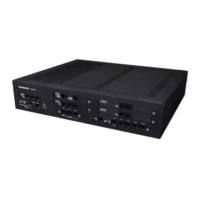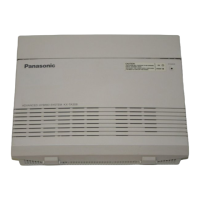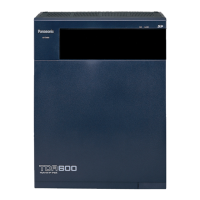• On KX-UT248 and KX-UT670 phones, the labels displayed on flexible buttons can be customised through
system programming.
® 12.1.4 PBX Configuration—[4-1-4] Extension—Wired Extension—Flexible Button—
Label Name
• Incoming/Outgoing call log information is stored on the phone, not on the PBX.
• Automatic Rerouting to Secondary PBX
A KX-UT series SIP phone can automatically connect to a secondary PBX if its primary PBX goes offline.
When the primary PBX is available again, the phone reconnects to it. (® 4.2.3.2 Automatic Rerouting to
Secondary PBX)
• For detailed explanations about a particular KX-UT series SIP phone, refer to the telephone’s
documentation.
• DSP Resource Usage
Making a call from a SIP extension requires a certain number of DSP resources, depending on the codec
used. If all DSP resources are in use, this operation cannot be performed. To ensure a minimum level of
performance, DSP resources can be reserved for VoIP communication. (® 5.5.4 DSP Resource Usage)
However, DSP resources are not required for P2P calls. (® 5.2.3 Peer-to-Peer (P2P) Connection)
Installation Manual References
4.4 Virtual Cards
PC Programming Manual References
9.4 PBX Configuration—[1-1] Configuration—Slot—System Property—Main—
System Speed Dial Download
For UT Extensions
9.5.1 PBX Configuration—[1-1] Configuration—Slot—Site Property—Main—Main— IP Terminal Registration
Mode
9.20 PBX Configuration—[1-1] Configuration—Slot—V-UTEXT32—Card Property
9.21 PBX Configuration—[1-1] Configuration—Slot—V-UTEXT32—Port Property
12.1.4 PBX Configuration—[4-1-4] Extension—Wired Extension—Flexible Button
Feature Guide 443
5.2.2 SIP (Session Initiation Protocol) Extension

